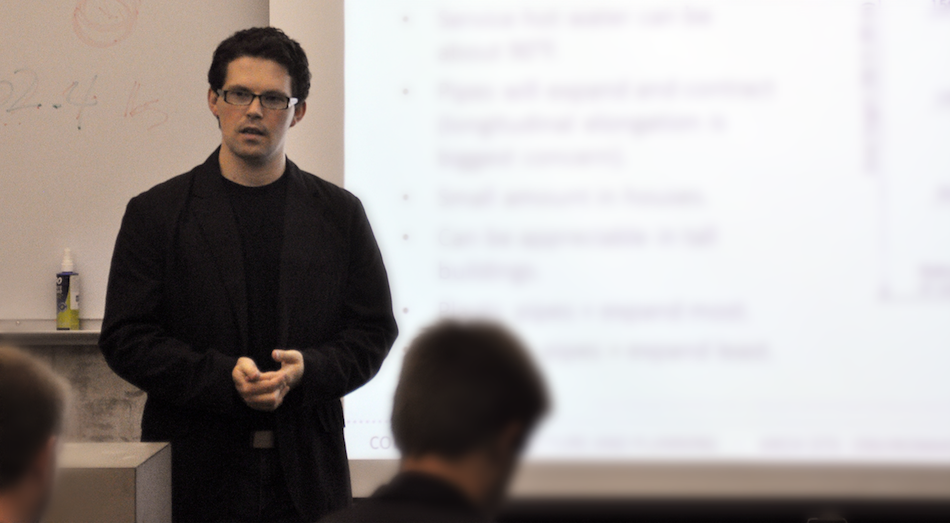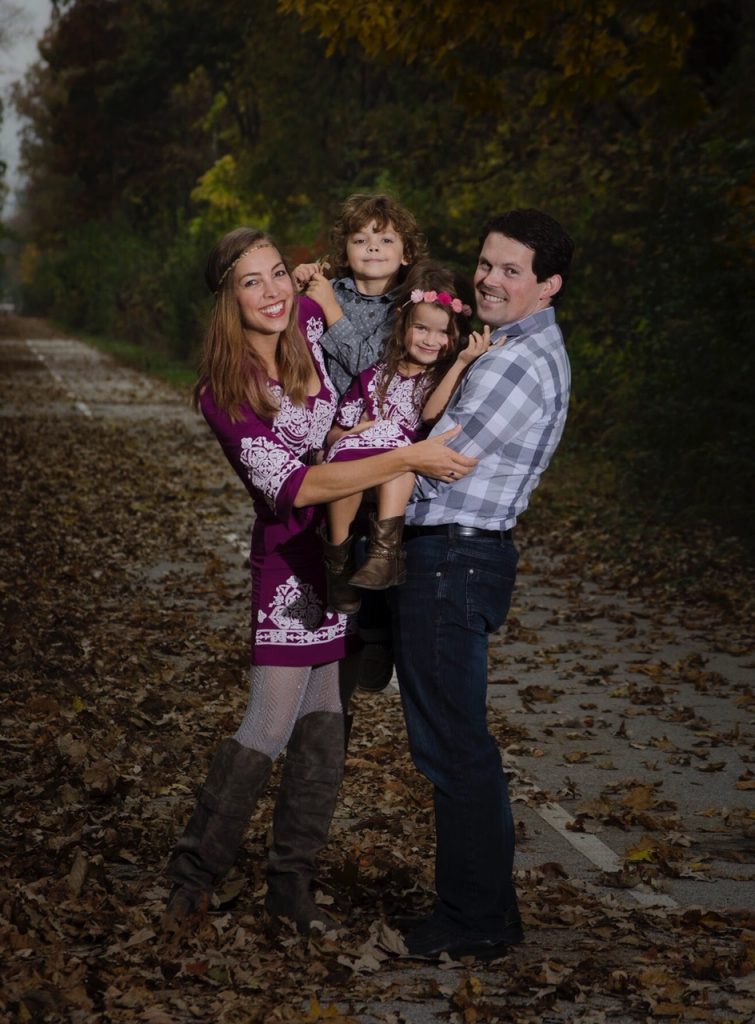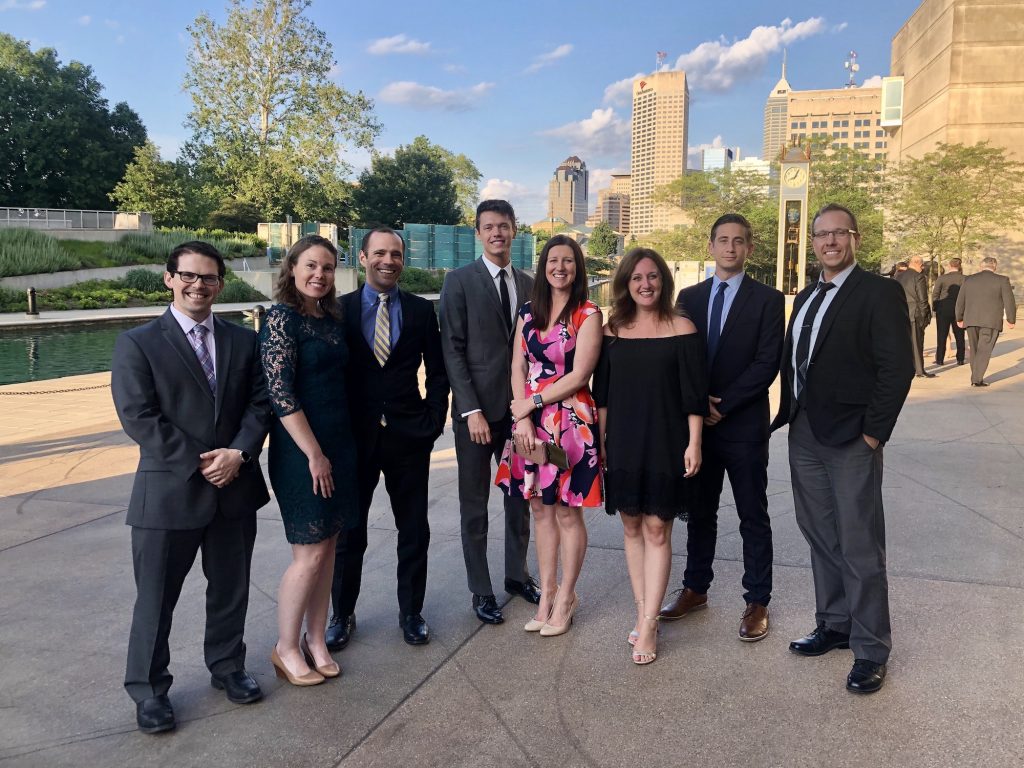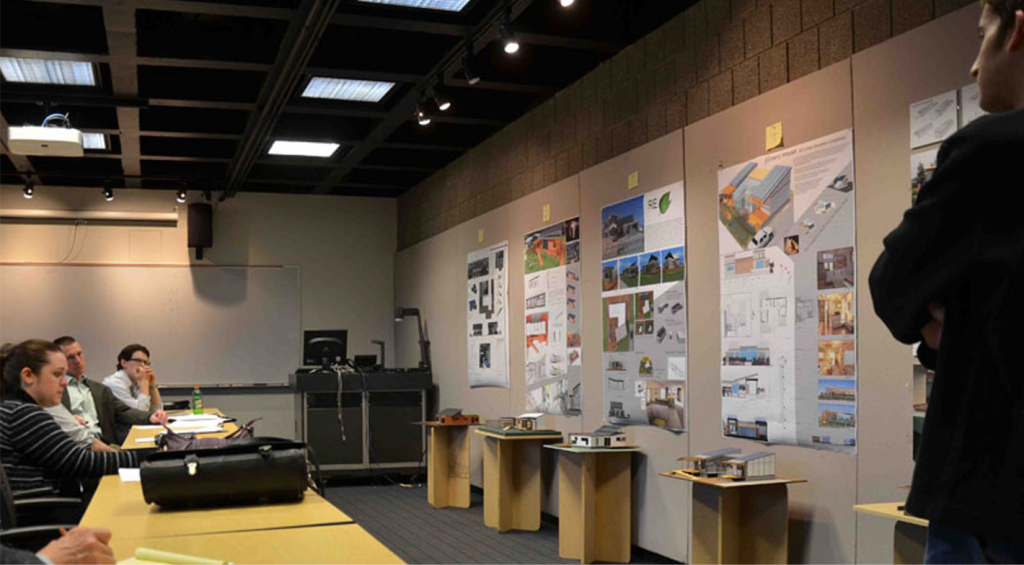
I wholeheartedly believe in the power of local efforts when it comes to building a sustainable future. When we act locally, and build up our communities, we put ourselves on a path toward collective change – change that can permeate globally.

Me and my family.
You see, I grew up in west-central Indiana — in the heart of coal country. Both of my parents worked for the local power utility. I actually met my wife during my first summer job working at a coal-fired power plant. Back then I did not know what architecture was nor did I understand the environmental impacts from miles of train cars filled with coal arriving to the plant every day.
But that all changed early in architecture school when I was assigned to read the book Cradle to Cradle, written by architect William McDonough and chemist Michael Braungart. It was a thesis on the emerging sustainability imperatives for our generation and an early construct for the circular economy. It prompted me to “think globally and act locally” when it came to sustainability.
After finishing up my graduate studies at the University of Nevada, Las Vegas (UNLV), I took an opportunity to come back home again to Indiana, settling in Indianapolis in 2008. Browning Day offered me an opportunity to leverage my technical skillset toward realizing what would eventually become the first certified net-zero energy project in Indiana. Looking back, it was the beginning of a number of firsts. In Indiana, I become the first WELL AP, the first design professional to become a Fitwel Ambassador, and the first person to ever earn a LEED Fellowship in the state. Over the next decade, I helped lead over a million square feet of LEED-certified space, served as the chair for USGBC Indiana twice, and contributed through a variety of service opportunities in the Hoosier state.

Some of my wonderful Browning Day colleagues and myself.
I realized early on that I needed to go beyond foundational ideas and designing with good intentions toward developing a robust technical skillset. To advance my professional goals, I took a non-traditional internship at the Natural Energies Advanced Technologies (NEAT) Lab at the UNLV and expanded my knowledge with regard to building science. I later worked at the Center for Maximum Potential Building Systems (CMPBS). During my brief time in Austin, Pliny Fisk and Gail Vittori made a deep impression on me. As an early adopter of LEED, I earned my LEED Accredited Professional (AP) credential in August of 2006 while working at Tate Snyder Kimsey Architects in Henderson, Nevada.
Throughout all of this technical knowledge building, I came to understand that a generational paradigm shift requires an investment in policy and education. So I invested myself into advocacy and teaching. I’ve contributed to Indianapolis and the state on a variety of policy-shaping initiatives, often representing and serving on behalf of USGBC Indiana and AIA Indiana. Moreover, I am currently on the faculty at Ball State University, where I am teaching environmental systems, building science, and professional practice.

Serving as a professional advisor for Ball State University as students developed designs for the Solar Decathlon.
This past spring, I worked with 21 students from Ball State University’s R. Wayne Estopinal College of Architecture and Planning to submit three team entries into the U.S. Department of Energy and National Renewable Energy Laboratory’s Solar Decathlon Design Challenge. All three of my teams placed in the international design competition and our Urban Single-Family divisional team submittal earned an Honorable Mention for framework that could rehabilitate vacant single-family housing across Indianapolis with low-carbon, high-performance solutions. I also recently helped advise a student-driven LEED BD+C certification effort — along with the university’s LEED Lab faculty, Janet Fick and Robert Koester — for a newly constructed facility underway on Ball State’s Muncie (Ind.) campus. This sort of student-delivered LEED work has never been modeled before and it is giving these emerging green leaders an immersive “real-world” LEED experience. Additionally, I’m executing a research agenda through which I am gauging the cost effectiveness of LEED for new commercial construction in Indianapolis.
I have always believed that all sustainability is local and I am doing everything I can to help contribute to a local professional community to accomplish something greater than any one of us alone.
I have always believed that all sustainability is local and I am doing everything I can to help contribute to a local professional community to accomplish something greater than any one of us alone. I represented AIA and USGBC alongside architect Mark Darrall on both the energy code and plumbing code review committees. Together, we submitted and effectively championed an amendment to the energy code that allows a performance path for compliance: We also got gray water recycling accepted into the code.
Thanks @danieloverbey @BallStateCAP @bdmdarchitects for testifying on behalf of AIA IN on HB 1331, which is pro-solar legislation. Thanks Rep. @mikespeedy for authoring the bill! pic.twitter.com/yt94HPa0Fp
— AIA Indiana (@AIAIndiana) April 22, 2019
And when the energy code was about to expire in December 2016, the advocacy work of our AIA Indiana Committee on the Environment (AIA-IN COTE) was instrumental in convincing Gov. Mike Pence to sign an executive order to extend the code another year — which gave us just enough time in 2017 to get it readopted.
I am absolutely certain without our advocacy work, we would not have an energy code today.
The effect and impact were such that it instilled an important lesson that I keep to this day — that code, standards, and rating systems are powerful vehicles for market transformation. This is why I so strongly advocate for LEED and other frameworks.